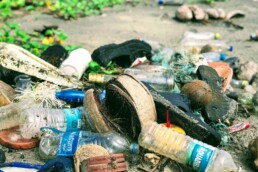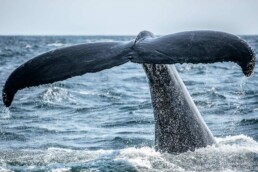We’ve talked about the environmental impact of e-commerce in other articles. We have also discussed what ways businesses can reduce their own negative impact on the earth. Today, we’ll be discussing the effect that e-commerce has on the world’s oceans and water supply.
Oceanic Pollution

Human activities on land are responsible for over 80% of oceanic pollution. While the majority of it is attributable to non-point source pollution, which is pollutants that fall into rivers and inevitably end up in oceans, river-borne litter and plastic account for a significant fraction of the pollution in our seas. Excessive packaging, tags, plastics, textiles, and microplastics from e-commerce retailers often end up in waterways and the open sea.
This debris not only pollutes our water but also grinds together to form microplastics and micropollutants that marine life consumes. When this occurs, aquatic species become vulnerable to fatality and other serious health issues. Some contaminants, such as microplastic, cannot be digested by other creatures which leads to contaminated marine food. These contaminated food sources ultimately make their way to us and other animals.
Ocean Acidification Caused by Emissions

The ocean provides one of the most significant benefits to the earth in terms of climate change. It absorbs 30-50% of all CO2 created by fossil fuels each year, keeping our environment healthier for longer. The three major sources of greenhouse gas emissions are electricity, transportation, and landfills. Together they contribute almost 36,000 billion tons of emissions per year.
This becomes problematic when roughly half of these emissions are absorbed by plankton, algae, and other marine plants through atmospheric diffusion and photosynthesis. This alters the total pH of the ocean’s surface water, accelerating acidification. The more waste we generate, the more emissions are released, the more the ocean absorbs, and the more acidic it becomes.
With the ocean acidifying quicker than it has in millions of years, species with calcium carbonate shells and skeletons are dissolving. As a result, organisms attempting to adapt to increasing acidity levels have a very narrow window of opportunity. Adaptation in such a short period of time causes slower reproduction as well as fewer and smaller offspring. Causing significant disruption across the ocean’s food chain.
Ocean Noise

Sound travels faster and farther under the ocean’s surface than land or in the sky. Many marine species rely on sound for communication, navigation, and other survival purposes. With an ever-increasing number of shipping containers transporting the world’s e-commerce goods from shore to shore, the ocean has become a cacophony of sound, interfering with marine life’s habitats and welfare. The incessant noise created by cargo containers, boats, ships, and other sea-bearing machines generates an auditory “smog” that reverberates throughout the ocean. This has a knock-on effect of limiting marine life’s sensory range. This has been related to a large number of whale strandings, aquatic species abandoning their habitats, and the death of various invertebrates such as scallops, crabs, and squid.
Beginner’s Guide to Third-Party Logistics (3PL)
The world of e-commerce is always changing, therefore understanding the roll of Third-Party Logistics is integral to keeping up. In light of this our beginner’s guide to third-party logistics (3PL) will delve into the essential aspects, offering insights into fulfillment services, warehousing, and much more.
Read More…
It’s no surprise that oceanic pollution has a significant influence on the environment. With the right information, e-commerce can help reduce oceanic pollution, by selecting sustainable packaging, creating environmentally friendly products, and streamlining the fulfillment of transportation needs. It is important to be aware of the environmental effects we observe around us in order to better assist the environment and increase the sustainability of your company. Partnering with a 3PL that specializes in creating sustainable solutions is a great first step.





